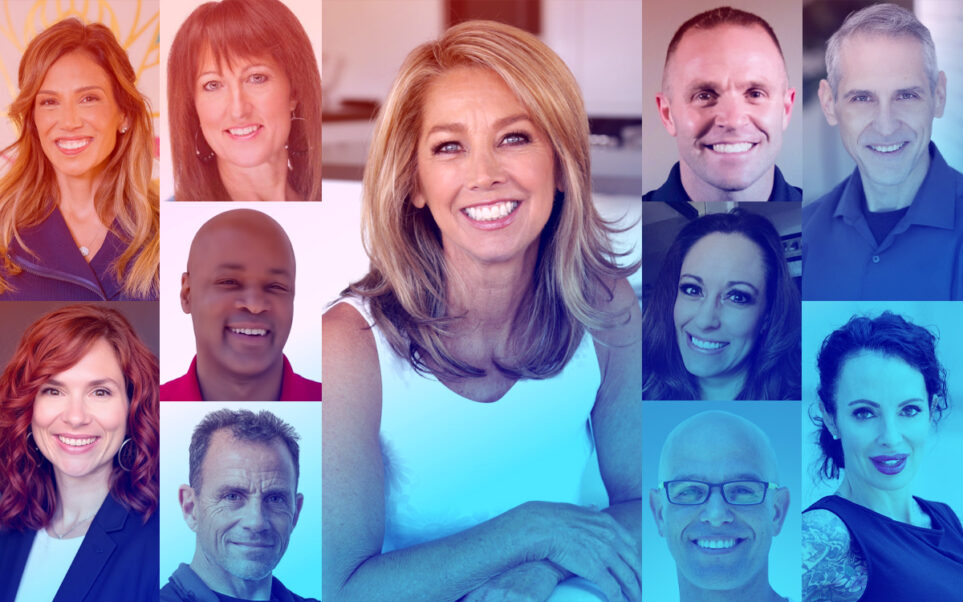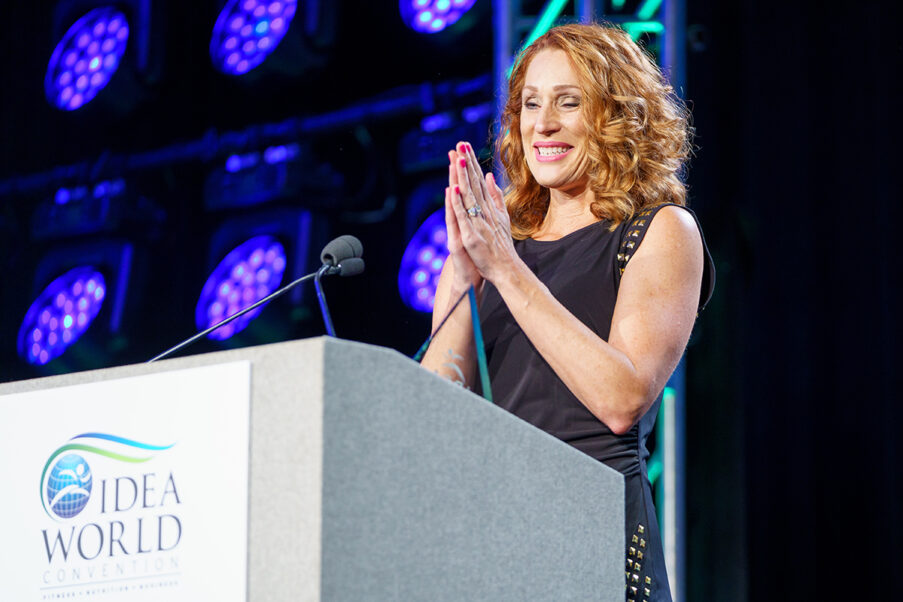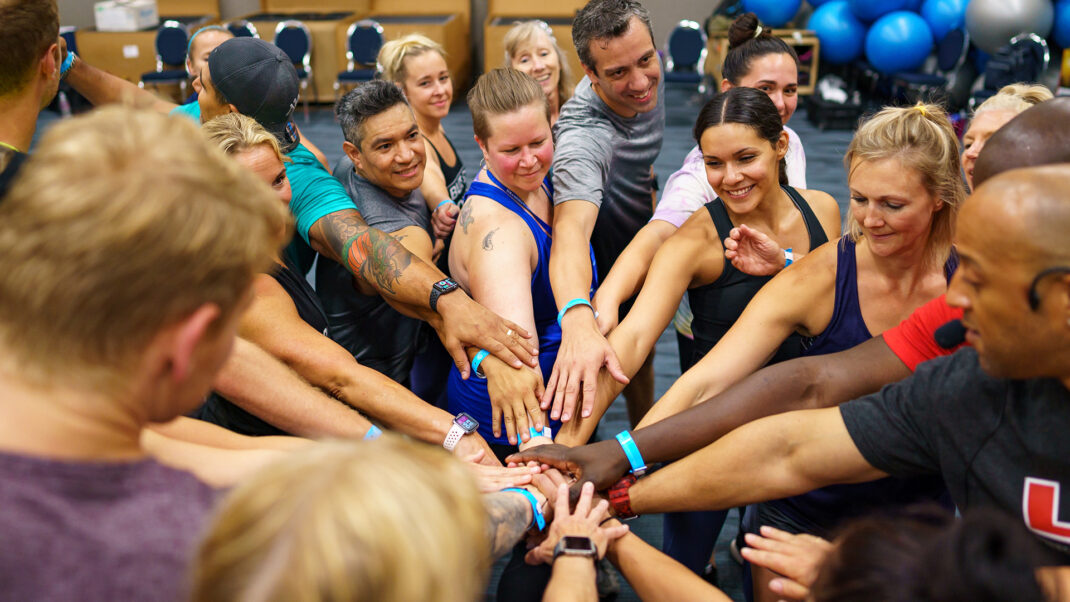Confronting the Obesity Epidemic
Interactive town hall meeting at 2003 IDEA Personal Trainer International Summit® plants a seed of action.

Fitness professionals feel a sense of urgency to take action against the dual health care concerns of obesity and inactivity. That is why IDEA put a serious face on the 2003 IDEA Personal Trainer International Summit’s opening session and called on a panel of experts and all convention delegates to talk frankly about one of our nation’s biggest challenges.
In lieu of a keynote speaker, this general session featured an interactive town hall meeting. It was moderated by Nichele Hoskins, senior fitness editor of Health magazine, and included four high-level health and fitness industry panelists: Jim Baugh, president of Wilson Sporting Goods and founder of the P.E.4Life initiative, a program with the goal of returning quality physical education to American schools; Steven Blair, PED, president and CEO of the Cooper Institute for Aerobic Research in Dallas and chief scientific editor
of the landmark 1996 Surgeon General’s report on physical activity and health; John McCarthy, executive director of IHRSA; and Commander Penny Royall, PT, MSW, acting executive director of the President’s Council on Physical Fitness and Sports.
If, before this discussion, attendees were not convinced that obesity and inactivity are dire threats to our nation’s welfare, Blair helped them see the light by citing plain facts derived from his 35 years of research. “According to our data, a low level of fitness is a more powerful predictor of early mortality than is cigarette smoking, high cholesterol, high blood pressure or really just about anything else we measure. It is the predominant cause of the obesity epidemic,” he said. “I have studied just how devastating inactivity and low levels of fitness are and have concluded that the low levels of physical activity in our population really constitute the biggest public health problem of this century.”
Hoskins followed up by asking Blair what he thought might happen if this stagnant pool of inactivity is not cleaned up soon, and his reply was just as sobering. He foresees that more Americans will become overweight or obese (according to current definitions) and that older, frailer, feebler individuals will be “incarcerated” in nursing homes.
“A whole host of health problems are associated with inactivity and low fitness. We’re fighting an uphill battle,” Blair observed. “The environment and our lifestyles conspire against us. According to various surveys, the rates of participation in walking, jogging, swimming and various sports haven’t changed that much over the last two or three decades. What has really changed in terms of causing the obesity epidemic is the amount of physical activity in daily life. Each of you could think of many examples of modern conveniences that have reduced people’s energy expenditure for everyday activities. This amounts to probably a few hundred kilocalories per day. We really have to think in terms of increasing activity in daily life as a way to address some of these problems.”
Royall agreed that making the nation more physically active is an uphill climb, but she told attendees to be encouraged by U.S. government leadership in the health and fitness arena. “We’re fortunate to have leadership at the very top of this administration, with one of the most active presidents we’ve had in years or maybe ever,” she said.
Royall flashed back to 1964 and used the first Surgeon General’s report on cigarette smoking as an example of how long it takes to change the American mind-set, even when it comes to life and death issues. “It has taken 40 years for us to come as far as we have with smoking. I plan on still being around when physical activity becomes as important a lifestyle change as cessation of smoking has become,” she said. “We are on the cusp of changing America in this way, but, as you know, change does not happen overnight. People don’t come to your gym and change their bodies and habits right away. It takes a lot of work. I want to stress local, local, local. You can get involved locally and start making these changes one person at a time. That’s why you are so important to this mission.”
Citing heightened American awareness of the obesity problem and the government’s increased interest in fitness programs and initiatives, McCarthy said that he is optimistic about the future. “In the club industry, we’re trying to take advantage of this enormously constructive movement in which business, government, the media, and science and medicine are all involved,” McCarthy said. “We in the industry are beneficiaries of this huge movement going on.”
Baugh has successfully emerged from the funding labyrinth of the federal budget process with dollars for P.E.4Life in hand. He advocates being locally active and keeping pressure on the government but feels the key is pooling resources and partnering toward a positive outcome. At one point during the discussion, he held up a 1960 issue of Sports Illustrated with President John F. Kennedy on the cover. “John and Penny talked about how it takes a long time for things to happen. This whole issue is dedicated to making America fit,” he said as he showed the audience the 43-year-old magazine. “The name of one of the articles in here is ‘The Soft American.’ We became active and firm after this, but now we’re back to being soft. I think you can act locally; you can write to the president and other local and national administrations. Let’s get back on the bandwagon. This will make a difference for people everywhere but, more importantly, for America.”
What have you done that’s inspired people to exercise? Do you have a client or class that inspires you? Send an e-mail, letter or fax telling us your story. We’ll be publishing your ideas in upcoming issues.
E-mail: content@ideafit.com
IDEA’s campaign unites our members with those of other organizations in a joint effort to reach out to nonexercisers. Our commitment is to provide you with information and sources so you can act locally.
What is the fitness professional’s role in moving this enormous mountain? Although no single solution exists, one unmistakable conclusion emerged from this discussion: Fitness pros must assume leadership and volunteer roles in their own communities to inspire and educate those who need their positive energy and exercise knowledge the most. Consider starting on some of these immediate action items explored during the session:
Be Well Informed. Know what goes on in your state and city governments.
Be Locally Involved and Proactive. Use your fitness knowledge to become a leader and an advocate of exercise and healthy living in your community.
Study, Study, Study. Learn, Learn, Learn. Continue your education so you can be a strong filter for everyday people confused by the constant stream of conflicting information.
Learn More About Behavioral Science. Most people know what they need to do to be active or lose weight but don’t know how to monitor themselves, set goals or use social support.
Gather and Use All Resources That You Can Find. Research and pursue funding opportunities.
Be Accountable and Hold Others Accountable. Don’t wait for someone else to start a program. Take initiative and follow through.
Spread the Message. Excite others about the importance of being healthy. Talk to kids, parents, businesses and fitness colleagues about how they can help.





